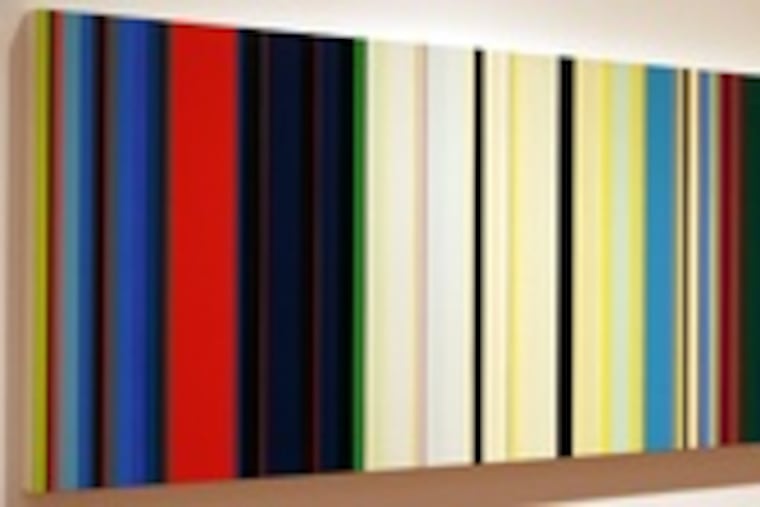Photography that puts it all together
Sharon Harper exposes a single print at multiple locations days apart.

As in her previous series of photographs - one of which was shot from the windows of high-speed trains in Germany - Sharon Harper continues to explore photography's ability to reveal more than the expected real-life image. Her latest prints are studies of the nighttime sky shot with an 8x10 view camera and a single sheet of film over a period of time (days, weeks, months) in spring and summer, in black-and-white and color, at different exposures and in multiple locations.
Her exhibition, "Moon Studies and Star Scratches," at the Print Center, features six prints from three "expeditions": one shot at Rincon, Puerto Rico, and Spy Pond, Mass.; two from the perspective of Clearmont, Wyo., and three taken at Saratoga Springs, N.Y., Middlesex, Johnson and Eden Mills, Vt., and Greensboro, N.C.
This is a way of working that invites questions - Harper's careful notations of her exposure times and locations on the wall labels mounted next to her pieces beg for an explanation for her choices of both in her show's statement - but the viewer is left guessing. One assumes that her locations were selected for their pollution-free air or geographical relationship to particular astronomical events, or both.
That said, these are handsome works with or without the information.
As captured in Harper's long exposures, stars leave glowing trails of light that resemble the drawn outlines of constellations in ancient astronomical charts. The sky is clear and illuminated.
Harper's lone silver gelatin print, from the Puerto Rico and Massachusetts shoots, is especially velvety and mysterious and prompted me to go to astronomy.com, where I learned that in April 2006, one of the months during which it was shot, I would have been able to see the moon as it "skates through the Pleiades star cluster" and "experience one of the most beautiful conjunctions the sky can deliver." Surely Harper knew this.
The depth and magnetism of her silver gelatin print is missing in her larger color prints, which look a little too much like magazine or book reproductions. But it may simply be that color detracts from the poetry of the night.
Abstract Valentine
Quiet, contemplative abstract painting has a friend in Larry Becker Contemporary Art. The gallery's current exhibition, "In Light: Tom Benson, Mel Davis, Andrew Graham, Howard Smith," which brings together artists from all over the country and from London, is a valentine to that particular strain of art.
Benson, who lives in London, paints his own homemade brew of pigment and cellulose binder on modestly scaled aluminum panels, devoting a single hue to a panel and giving such classic paint colors as English Ochre, Lamp Black, and Cadmium Red whole new identities. I was reminded, among other things, that Lamp Black is really a very dark gray.
Davis, who works out of Berkeley, Calif., applies layer upon layer of oil paint to achieve the limpid-pool look of her silvery-gray-mauve paintings on canvas mounted to wood panel. They remind me of the Los Angeles or Long Island City sky at dusk.
Graham, working in Rockford, Ill., is the percolator of the group. His vertical stripes on horizontal wood panels pulse like music (one, in fact, is titled Drumming), and he also uses a more eccentric palette than in the past (the last time I saw his paintings I thought he was veering too close to Gene Davis). He's his own one-man band now.
Having previously only seen New Yorker Howard Smith's tiny, captivating oil-on-linen paintings, I was interested to see how his minute gestural brushstrokes that look like oil-stick rubbings would translate to larger canvases. They do, and nicely, too, although I would ideally like to see Howard Smith's next to Howard Smith's because the nubbly seeming surfaces of his paintings are so distinctive. (You can see many Smiths together in his one-person show at Bjorn Ressle Gallery in New York, from Jan. 31 through March 8).